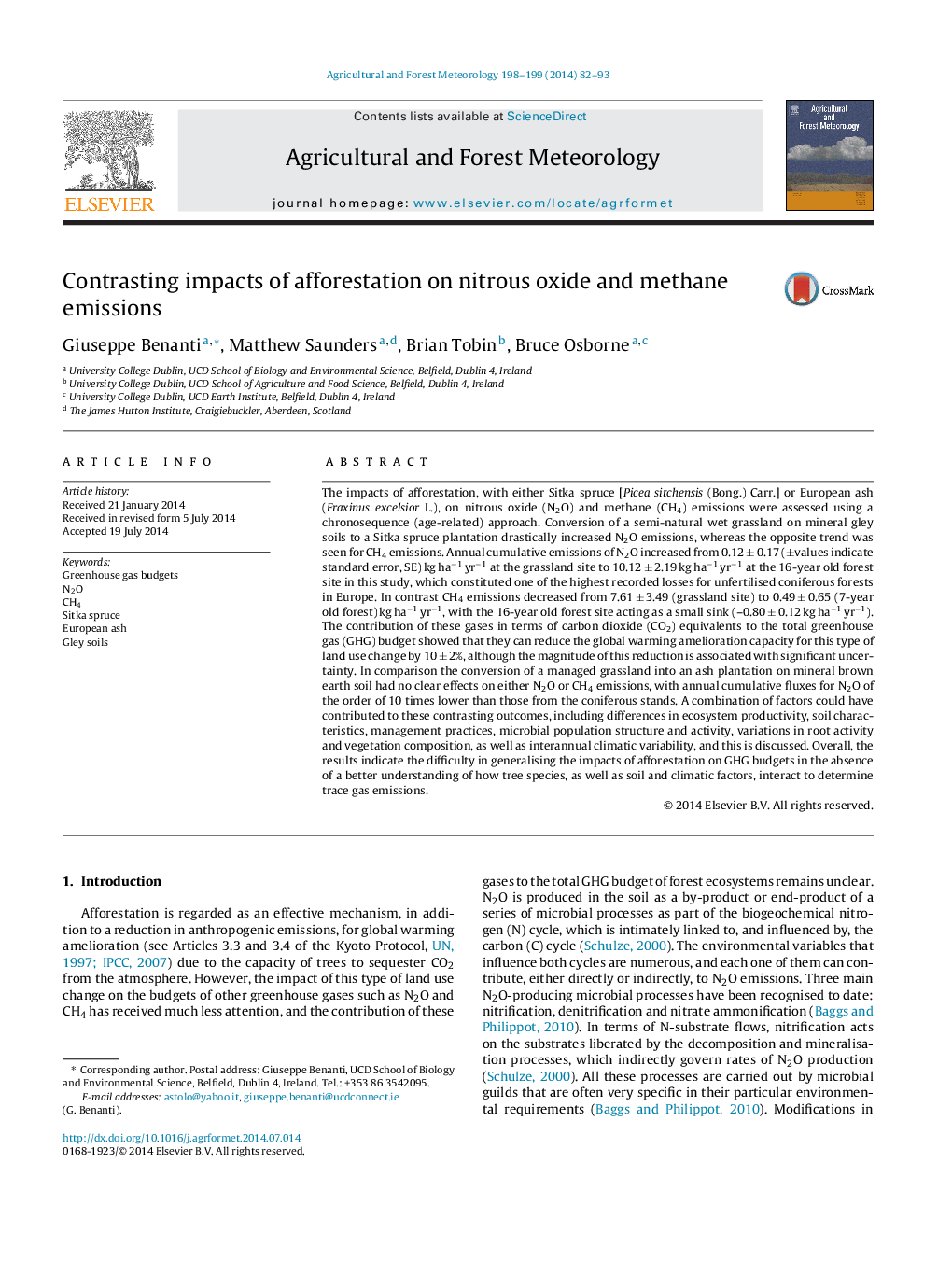| کد مقاله | کد نشریه | سال انتشار | مقاله انگلیسی | نسخه تمام متن |
|---|---|---|---|---|
| 6537509 | 158334 | 2014 | 12 صفحه PDF | دانلود رایگان |
عنوان انگلیسی مقاله ISI
Contrasting impacts of afforestation on nitrous oxide and methane emissions
ترجمه فارسی عنوان
اثرات متقابل جنگل زدایی بر روی اکسید نیتروژن و انتشار متان
دانلود مقاله + سفارش ترجمه
دانلود مقاله ISI انگلیسی
رایگان برای ایرانیان
کلمات کلیدی
موضوعات مرتبط
مهندسی و علوم پایه
علوم زمین و سیارات
علم هواشناسی
چکیده انگلیسی
The impacts of afforestation, with either Sitka spruce [Picea sitchensis (Bong.) Carr.] or European ash (Fraxinus excelsior L.), on nitrous oxide (N2O) and methane (CH4) emissions were assessed using a chronosequence (age-related) approach. Conversion of a semi-natural wet grassland on mineral gley soils to a Sitka spruce plantation drastically increased N2O emissions, whereas the opposite trend was seen for CH4 emissions. Annual cumulative emissions of N2O increased from 0.12 ± 0.17 (±values indicate standard error, SE) kg haâ1 yrâ1 at the grassland site to 10.12 ± 2.19 kg haâ1 yrâ1 at the 16-year old forest site in this study, which constituted one of the highest recorded losses for unfertilised coniferous forests in Europe. In contrast CH4 emissions decreased from 7.61 ± 3.49 (grassland site) to 0.49 ± 0.65 (7-year old forest) kg haâ1 yrâ1, with the 16-year old forest site acting as a small sink (-0.80 ± 0.12 kg haâ1 yrâ1). The contribution of these gases in terms of carbon dioxide (CO2) equivalents to the total greenhouse gas (GHG) budget showed that they can reduce the global warming amelioration capacity for this type of land use change by 10 ± 2%, although the magnitude of this reduction is associated with significant uncertainty. In comparison the conversion of a managed grassland into an ash plantation on mineral brown earth soil had no clear effects on either N2O or CH4 emissions, with annual cumulative fluxes for N2O of the order of 10 times lower than those from the coniferous stands. A combination of factors could have contributed to these contrasting outcomes, including differences in ecosystem productivity, soil characteristics, management practices, microbial population structure and activity, variations in root activity and vegetation composition, as well as interannual climatic variability, and this is discussed. Overall, the results indicate the difficulty in generalising the impacts of afforestation on GHG budgets in the absence of a better understanding of how tree species, as well as soil and climatic factors, interact to determine trace gas emissions.
ناشر
Database: Elsevier - ScienceDirect (ساینس دایرکت)
Journal: Agricultural and Forest Meteorology - Volumes 198â199, NovemberâDecember 2014, Pages 82-93
Journal: Agricultural and Forest Meteorology - Volumes 198â199, NovemberâDecember 2014, Pages 82-93
نویسندگان
Giuseppe Benanti, Matthew Saunders, Brian Tobin, Bruce Osborne,
